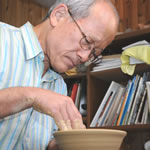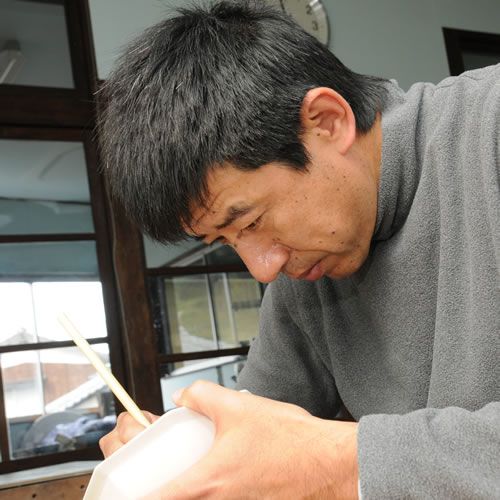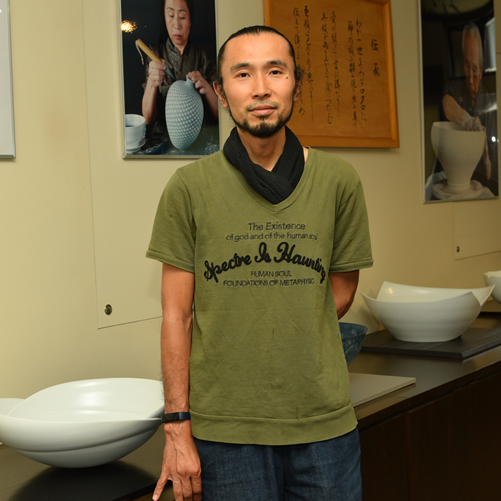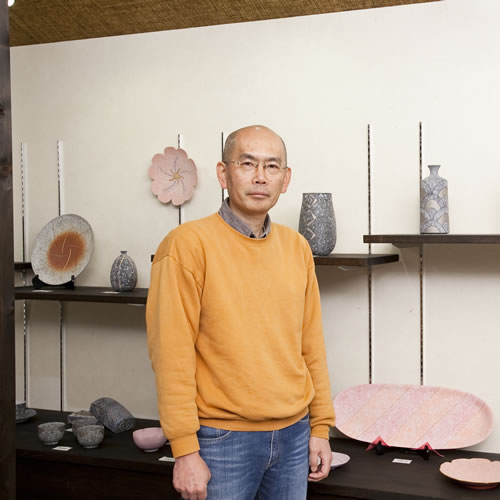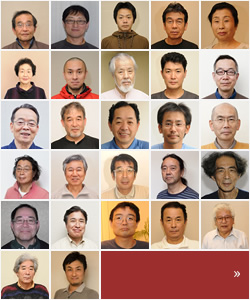TOP > Ceramics > Koishiwara Ware
Koishiwara Ware
It is the ceramic which has established the "Yonobi (beauty of usage)", exchange culture with Takatori ware
Koishiwara is the name of the high plains in the valley there, surrounded by the mountains in all directions. Toho village is about ten minutes drive by taxi from the Hikoyama station of JR Harutahikoyama Line (old koishiwara village no longer exists due to merger). Once, when mountaineering asceticism was prosperous, it was the land where many Buddhist monks hid themselves in the sacred Mt. Hikosan. Giant cedars more than 500 years old cluster, and it has become a famous spot for sightseeing, such as "Gyojasugi (ascetic cedars)", "Sakaimeishi (boundary line monument)".
Koishiwara Ware started 350 years ago, and refers to the ceramic which is produced at the present Toho village Asakura-gun Fukuoka prefecture. Carrying on the traditional skills, craftsmen keeps making tableware which is used in daily lives with the clay from Koishiwara region. It is said that Koishiwara Ware follows Takatori Ware which tells us the personality of the Enshu seven kilns today. The clay and the woods appropriate for making tableware are easy to be found in the Koishiwara mountains. The clay from Koishiwara contains much iron. Now fifty kilns are located there. You can say that it is one of the famous Minto's (folk craft pottery) village represented Japan.
The origin of Koishiwara Ware is that Hachinojo of the first generation TAKATORI, Hachizo's grandson found the pottery's clay and fired the grinding bowls and pots in 1669. And then, the Korean potter was invited from Imari by KURODA, Mitsuyuki who was the third generation head of Fukuoka clan in 1682. They made porcelain learning from the Chinese technique with Hachinojo. It declined for a while, and Koishiwara Ware was revived developing from Takatori Ware, pottery was made at the end of the Kyoho terms (1716-1735).
When the Showa era (1926-1989) began, Bernard Leach or HAMADA, Shoji visited old Koishiwara village, and it was taken notice by the mass media. It then became widely known. Koishiwara Ware won the grand prix at Exposition International de Bruxell in 1958, and it became spotlighted as "Yonobi (beauty of usage)".
During the commodity shortage after the World War Ⅱ, the demand for the grinding bowls and pots increased and Koishiwara Ware became widely accepted with the activation of the folk handicraft campaign. MIYAKE, Chuichi who was the leader of the NIHON MINGEI KYODAN (Japanese Folk Handicraft Association) those days, promoting the folk handicraft activation, and especially tried to spread Koishiwara Ware. Japan Folk Art Museum Koishiwara Branch Center was established by MIYAKE in 1960. Koishiwara Ware was designated as the traditional crafts product by the Ministry of International Trade and Industry for the first time in Japan, in 1976. By the suggention of Japan Folk Art Museum Koishiwara Branch Center and pottery cooperative society, Mintomuramatsuri (the folkcraft pottery village festival) is continuously held now. Koishiwara Ware was developed by the MIYAKE's enthusiastic encouragement and receiving the boom of folk craft pottery. There is the exhibition room where pioneer's ceramics were collected in the Koishiwarayaki Ceramic Museum. Additionally, the present kiln's masterpiece and the materials or the tools and so forth to make pottery are displayed. And there are some pottery studios where people can enjoy making pottery.
The prosperity and the stagnation are repeated in the stream of time. They continue to make daily ornaments continuously. Many people love one of the valuable wares which conveys the warmth to present age, reconsidering the handwork. It is simple, warm, succeeding the tradition, and they challenge the new Koishiwara Ware's style.
The technique of Koishiwara Ware
TOBIKANNA
Pouring the engobe on the half dried clay, and scraping it to paint pattern with a wood planer while turning the potter's wheel.
HAKEME KUSHIME
As soon as pouring the engobe, and painting pattern with a brush or a comb while turning the potter's wheel.
YUBIKAKI
As soon as pouring the engobe, turning the potter's wheel, and painting the curved line by the finger.
NAGASHIKAKE
Turning the potter's wheel slowly, and pouring the glaze or engobe on the side of the jars, and so forth.
UCHIKAKE
Pouring the glaze into the cup, and gradually putting it on the molded pottery.
PONGAKI
Coordinating the glaze which is flowing out of the bamboo container, and immediately painting.

